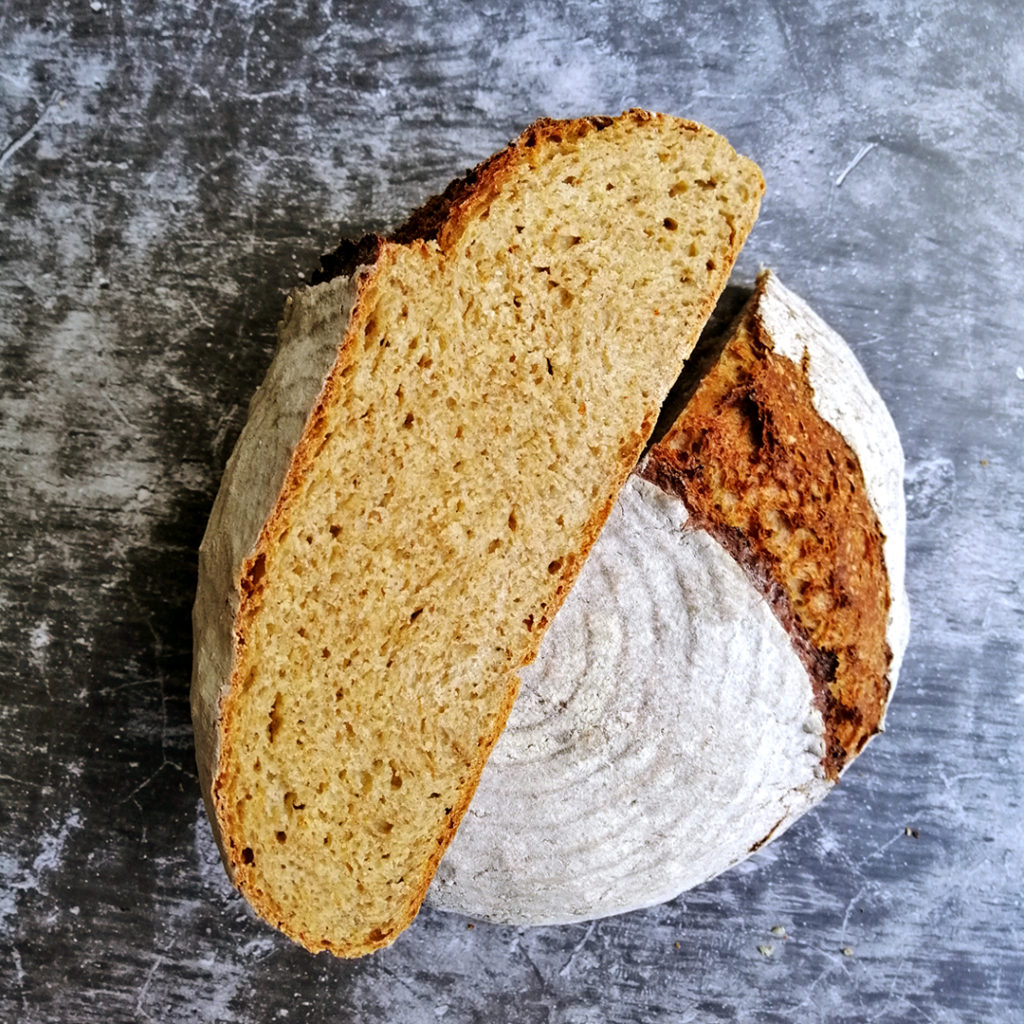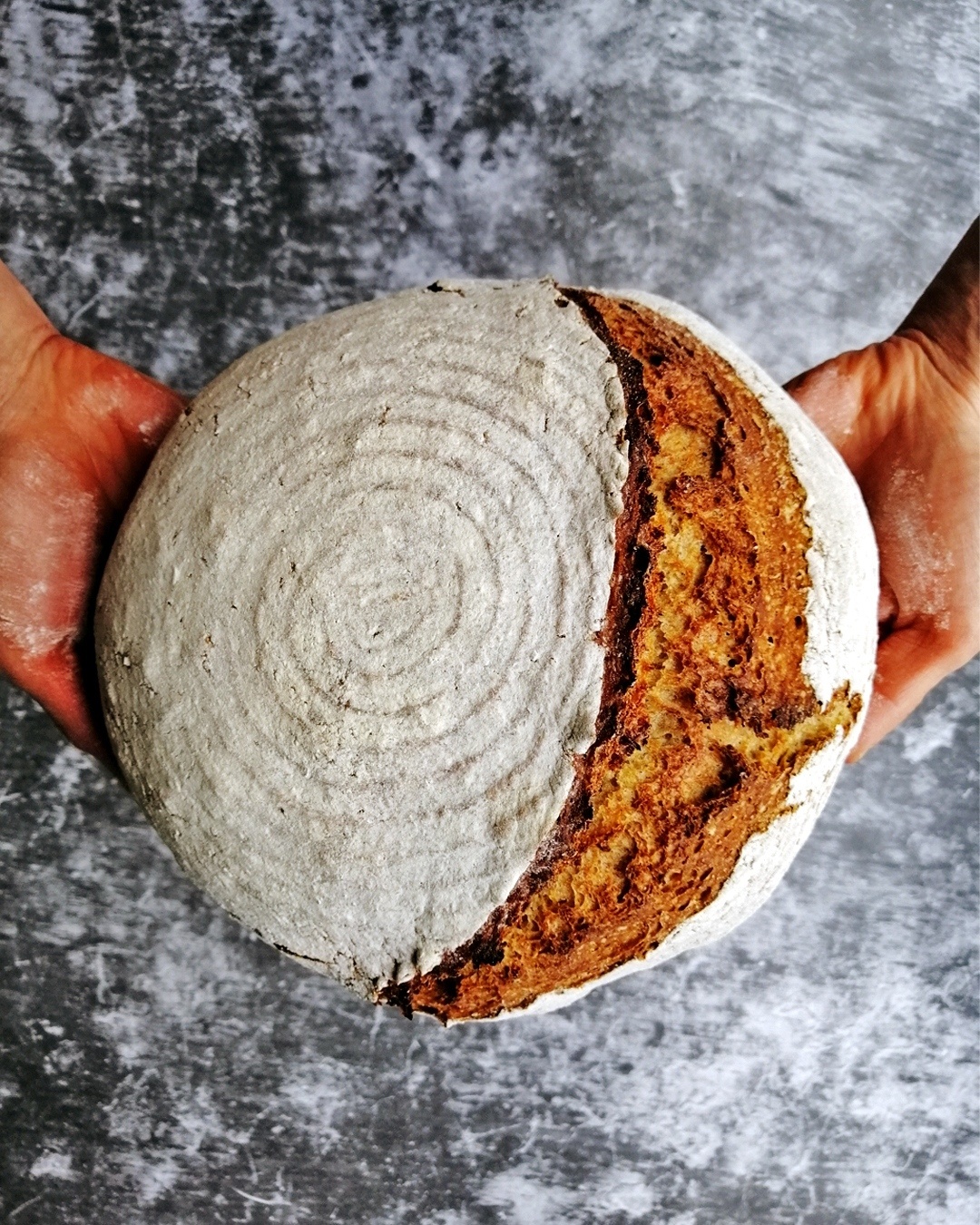*Disclaimer: long story for a short recipe.*
Since I was a kid, whenever I was hungry my mum would always say, “if you’re hungry, eat some bread”.
It’s no mystery that the typical Italian diet is quite big on carbs. Breads, baked snacks, pasta, pizza, risotto. Yes, Italians know their starches.
In particular, growing up bread was everywhere. We would eat it for breakfast in the form of twice-baked bread (or rusk), as a snack (filled with jam or chocolate spread), for lunch (usually to mop up the pasta sauce left on the plate, nothing should be thrown away), then again as an afternoon snack (perhaps with some ham or mortadella), and why not, in the evening in the form of croutons to go with your soup.
And then the late 80s and early 90s came and, all of a sudden, bread became the “evil thing”. Carbs. Starch. Eating them was bad for your waistline and if you wanted to look like Jane Fonda you had to throw them all in the bin.
But, it’s also no mystery that no Italian could survive without bread for too long. Therefore, with the raise of the trendy no-carbs no-fat diets, tv ads promoting any sort of ‘healthier’ alternative arrived too, advocating for products with a higher content of fibres, vitamins and minerals. Those are good for you.
At some point, the five-grain combo became the most popular alternative to “evil common bread”. Wheat, oats, rye, spelt and rice. Five-grain bread, five-grain biscuits, five-grain crackers, five-grain cookies, you name it. One of the most popular products was actually a tasty snack made of five-grain sponge and filled with cocoa and milk spread. Five grains, it’s good for you. On top of that, the TV ad contained a ridiculously catchy song, and I can still remember the lyrics and music after so many years.
Yes, I’m part of that generation, generation five (grains).
That’s the reason why, as part of that generation, I have always considered the five-grain combination as an Italian classic. Of course, that’s not really the case, but it is, based on the story above, and I wanted to pay homage to that memory with one of my recipes. A bread recipe was the obvious choice, and this time I also wanted to keep it easy and simple to bust the myths that making bread is a difficult task. It doesn’t have to be difficult and I really encourage anyone to give it a go. Bread is good for you, it’s not evil (even the one without five or more grains).
*Bread ad ends*
My five-grain no-knead bread is inspired by an overnight bread recipe by Tamsin Burnett-Hall. She, in turn, was inspired by a method popularised by The New York Times food writer Mark Bittman. I decided to take it a step further and swapped part of the white bread flour with four different grain flours: oats, rye, spelt and rice. A total of five grains, and no ready-made bread flour mix. If this sounds scary to you, believe me, mixing the flours is so much fun and almost liberating – it feels like being a baking bread alchemist.
Then, onto the second-best part:
1) Mix the flours with water and a few other ingredients.
2) Leave it there to ferment for 12 to 18 hours.
3) Bake.
As simple as that. I’m not lying, fermentation will do all the hard work, and in the meantime you can relax. Or sleep.
You will love its hearty flavour of whole grains and the light acidity from the long fermentation. Its creamy crumb and crunchy crust are very satisfying to eat, even if only accompanied by some olive oil or butter.
This has already become a favourite in my kitchen. There’s nothing quite like a slice of bread fresh from the oven and I promise this one will make you wish you’d taken up bread-baking years ago. Well, as they say, it’s never too late.
Note: to ensure it’s super-easy to make, I tried my recipe of the five-grain no-knead bread a few times without any kneading methods or fancy equipment at any point of the process. In fact, the use of ovenproof casserole in the list is a suggestion, but at the end of the post you can find my tips on how to bake your bread without it.
Want to take this bread even further? Try adding 50g of mixed seeds or nuts of your choice for more texture. I tried that as well, and it’s simply magnificent.
Want to give it a go at more Italian bread? Try my recipe for a simple mantovana bread, have fun with some crunchy hand-pulled grissini, or make a soft focaccia with a classic garlic and thyme flavour.

Makes 1 cob (about 850 g)
Note: The dough will need to rest and ferment overnight for 12 hours. I recommend mixing the dough in the evening and baking the bread the morning after, but it’s totally up to you.
Ingredients
FOR THE DOUGH
- 225g strong white bread flour
- 100g wholewheat flour
- 70g rye flour (I used light rye)
- 40g oat bran (if you can’t find it, just blitz some oats to a powder)
- 40g rice flour
- 75g spelt flour
- 2g instant action yeast
- 10g sea salt
- 375ml lukewarm water (about 28°C)
- 25g honey
- 5g malt syrup (optional)
SPECIAL EQUIPMENT
- Ovenproof casserole / Dutch oven / cloche (optional, see note at the end of the recipe)
Method
MAKE THE DOUGH
- Sift all the flours into a large bowl, add salt to one side and yeast to the other, so they don’t directly touch each other. Give a good stir so salt and yeast disperse evenly in the flour. Dissolve the honey and malt syrup in the water, make a well in the flour and pour all the liquid in the bowl.
- Using a wooden spoon or a fork, mix all ingredients until you obtain a rough and slightly tacky dough. Don’t knead or work the dough, just stop mixing as soon as there is no more flour leftover to incorporate. Cover with cling film and a tea towel and leave to ferment at room temperature for 12 hours.
- After 12 hours, uncover the dough. You will see that it has at least doubled in size, probably even more, and it smells of wholewheat, spelt and oats, with a slightly acidic note. Flour your work surface and scrap the dough out of the bowl onto the bench. Wet your hands with some water. With both hands, pick up the dough from the middle and lay it back over itself. Turn 90° and repeat a couple of times to give some tension to the dough. (This is called “coil folding”, you can see a quick example here). Cover the dough with the bowl and leave to relax for 30 minutes.
- Lightly oil a medium sized bowl that can comfortably contain the dough. Shape the dough into a ball, trying to retain the air inside, and transfer to the oiled bowl, seam side up. Lightly flour the seam side of the dough, cover with cling film and a tea towel and leave to prove for 2 hours. (You can obviously use a proving basket if you own one).
TO BAKE THE BREAD
- Roughly one hour before baking, pre-heat the oven to 240°C / 220°C fan, heating up the casserole/cloche you will bake the bread in. When proving time has passed and you are ready to bake, turn the dough over onto a parchment sheet, flour the surface and score across the middle with a sharp knife or a lame, holding it at an angle. Transfer into the casserole, replace the lid and bake for 30 minutes.
- After 30 minutes, take the lid off and bake for another 10 to 15 minutes until the crust is crispy and caramelised. Remove from the oven and leave to cool completely over a rack. Slice and enjoy with your favourite topping, or simply on its own with some butter or extra-virgin olive oil.
NOTE: If you don’t own an ovenproof casserole or a Dutch oven, no worries! Just add these steps to points 5 and 6 above:
- When you switch on the oven to heat, leave the oven tray in to heat up too. Also place a metal traybake or deep loaf tin on the oven bottom to heat up.
- When nearly ready to bake, boil the kettle. Transfer the cob onto the parchment and onto the heated oven tray. Pour some boiling water into the other metal container in the oven, so it will create steam while the bread is baking, slowing the formation of the crust. If you have a mister or spray bottle, spray the sides of the oven after you poured the water, for an extra burst of steam.

